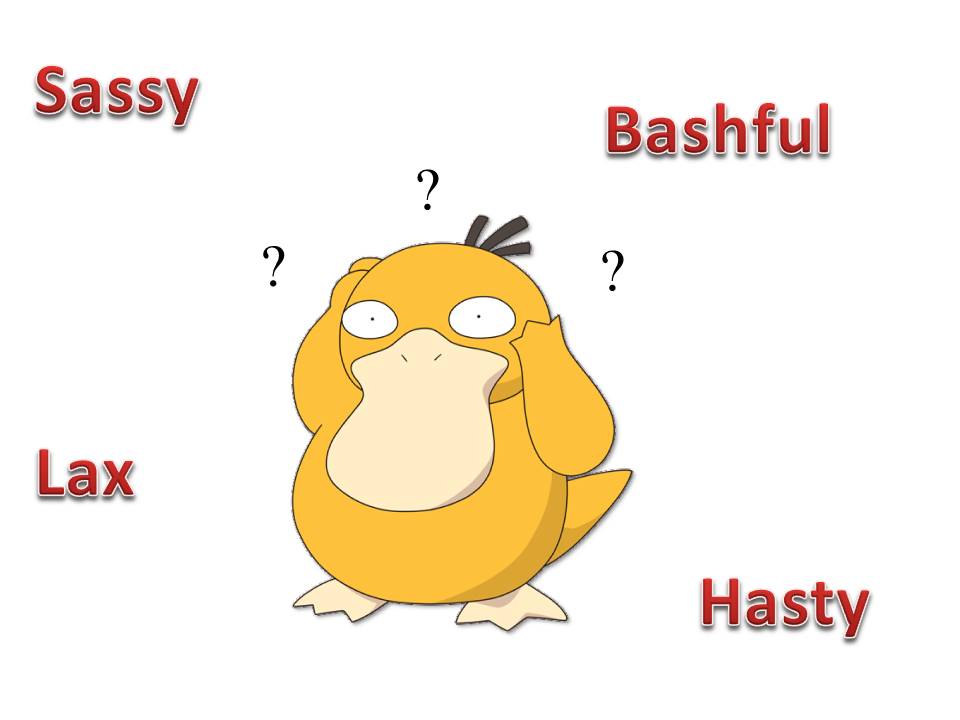The recently released Pokemon Ultra Sun and Ultra Moon have received high praise and drawn many back to the long-running franchise with their mix of nostalgia and innovation.
If you haven’t picked up a Pokemon title since Silver and Gold or, like this writer, never really paid that much attention to some of the finer points in the games, like natures, you might be thinking Sassy, Quirky, and Impish are the leftover dwarves from Snow White no one ever talks about. But there’s a lot more to natures than imparting an element to personality to your Pokemon, as they can significantly affect how your Pokemon grows.
What Are Pokemon Natures?
Natures were first introduced in Generation III (Ruby, Sapphire, and Emerald), and most affect a Pokemon’s stat growth. 20 of the 25 natures raise one stat and decrease one, and there are five neutral natures that don’t affect anything. Managing natures is particularly useful for those wishing to enter the competitive scene, but it has benefits in normal gameplay too, especially if you like to use your favorites, instead of strong Pokemon only.
For example, Yungoos naturally has low Defense (and low everything else except Attack, for that matter). If you want to use it and still have a good chance of success, a Relaxed or Impish nature would be ideal, since both raise Defense by up to 20 points over time, compared to a hindering or neutral nature, and they lower a stat that isn’t as important for Yungoos.
Natures are randomly assigned when the game generates a Pokemon, be it in the wild, an in-game trade, or through breeding. Random it may be, but if you’re breeding Pokemon and attempting to obtain a specific nature, having the male or female hold an Everstone ensures the offspring will share their respective nature. That applies to any Pokemon game after Black 2 and White 2, with different mechanics in place for earlier games.
Stat Overview and Nature Chart
In case you’re new to Pokemon, here’s a short rundown of each stat.
Attack and Defense are both related to physical moves, with attack determining how much physical damage your Pokemon can dish out, and defense relates to how much it can take. Special Attack and Special Defense are the same, but for special moves–the ones with the purple spiral in a move description, such as Psychic. And Speed, if you haven’t already guessed, determines turn order and which Pokemon goes first in a battle.
The below Pokemon nature chart (of sorts) groups natures by which stat they raise and lists the lowered stat as well.
Attack Group
Lonely
- Raises: Attack
- Lowers: Defense
Brave
- Raises: Attack
- Lowers: Speed
Naughty
- Raises: Attack
- Lowers: Special Defense
Adamant
- Raises: Attack
- Lowers: Special Attack
Special Attack Group
Rash
- Raises: Special Attack
- Lowers: Special Defense
Mild
- Raises: Special Attack
- Lowers: Defense
Modest
- Raises: Special Attack
- Lowers: Attack
Quiet
- Raises: Special Attack
- Lowers: Speed
Defense Group
Relaxed
- Raises: Defense
- Lowers: Speed
Impish
- Raises: Defense
- Lowers: Special Attack
Bold
- Raises: Defense
- Lowers: Attack
Lax
- Raises: Defense
- Lowers: Special Defense
Special Defense Group
Gentle
- Raises: Special Defense
- Lowers: Defense
Calm
- Raises: Special Defense
- Lowers: Attack
Careful
- Raises: Special Defense
- Lowers: Special Attack
Sassy
- Raises: Special Defense
- Lowers: Speed
Speed Group
Hasty
- Raises: Speed
- Lowers: Defense
Timid
- Raises: Speed
- Lowers: Attack
Jolly
- Raises: Speed
- Lowers: Special Attack
Naive
- Raises: Speed
- Lowers: Special Defense
Neutral Group
- Hardy
- Docile
- Serious
- Bashful
- Quirky
—
Whether you’re playing just for fun or you’re planning on entering a competition, understanding Pokemon natures will get you that much closer to being a true master.
Will you be paying careful attention to your Pokemon’s natures from now on? Let us know down in the comments and be sure to check out our other Pokemon Ultra Sun and Ultra Moon guides!







Published: Nov 25, 2017 06:00 pm